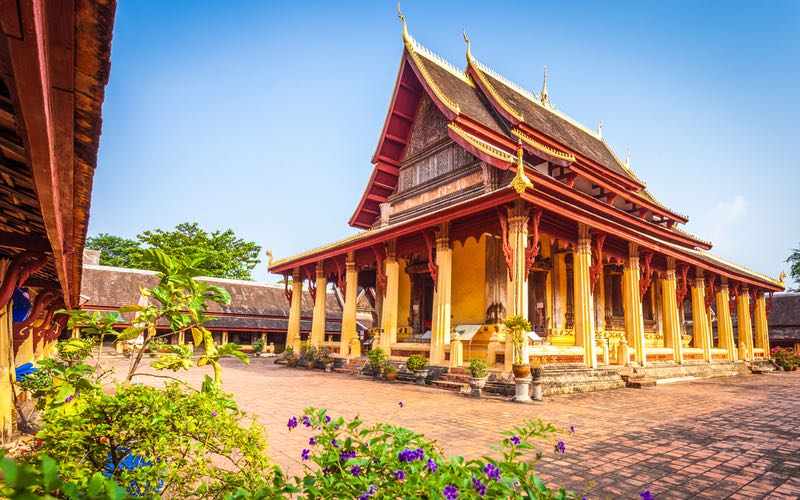The story of Wat Sisaket
Life for most people in Vientiane revolves around the temple. Buddhism is an important part of the culture and most men will spend at least some time as a monk during their lives. As well as being a place where people meet, eat, pray, and receive blessings, the main festivals also generally centre around the temples.
Folklore, religion and history combine in the stories behind many of Vientiane’s temples. The oldest and one of the most fascinating is Wat Sisaket.

Set in shady grounds, the temple itself is a beautiful building which was commissioned by Chao Anouvong, whose statue now looks over at Thailand from the park bearing his name. Wat Sisaket was built in the early 19th Century as his own private monastery but just a few years after it was finished, Vientiane was destroyed by invaders. Nowadays, at this busy crossroads, it’s hard to imagine the sight that greeted the French explorers when they arrived in the city in the 1860s and found Wat Sisaket standing alone, surrounded by jungle and the rubble of the old palace and temples.
It is unusual, both because of the eclectic mix of Buddhist building styles, and the placing of the main building, or Sim. Traditionally, temples run parallel to the river but this one was built at an angle, so that when the king prayed, his feet pointed towards the Mekong. The Sim has a five tiered Thai style roof, whilst over the library, where the ancient Buddhist scriptures, the Tripitaka, used to be kept, it is Burmese. Why this temple survived is open to conjecture. Maybe because of the Thai design of the Sim, or the proximity to the palace, the invading soldiers used the temple as their barracks. Whatever the reason, it alone was saved.
Many thousands of old and often broken Buddha statues fill the cloisters, some dating back centuries. Buddha images are sacred, and when one is damaged it needs to be treated with care. Sisaket provides this. In the temple itself are many more Buddha images including a Khmer style stone Buddha protected by the Naga King, that dates from the 13th Century, and a replica of the Phrabang Statue which gave the city of Luang Prabang its name. In front of these is an intricate candelabra, symbolizing the Buddhist conception of the world, from Mount Meru, the home of the Gods, down to the fish, swimming in a cosmic ocean, guarded on each side by a Naga. And on the walls are stucco murals from the 19th and early 20th Centuries depicting some of the Jataka tales which tell of the Buddha’s previous lives.
Each year, in mid-April, the Buddha statues are brought out to be cleansed as an important part of the New Year ceremony. At Wat Sisaket, they use a wooden trough, called a Hang Hod which is ornately carved to represent a Naga. Perfumed water flows through this and on to the heads of the Buddha images and the monks. This is found just behind the sim, waiting for its annual duty.
As you walk through the gardens, look out for the artist Bounseng who spends each day amidst the stupas, drawing intricate images from the temple as well as from Lao and Buddhist folklore and history. You might also want to check out Wat Hor Phra Keo opposite, which was originally built to house the Emerald Buddha, now in Bangkok, but more on that another time.


